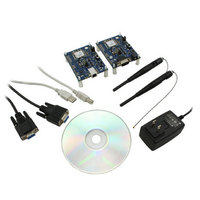DVK-PRM112 Laird Technologies, DVK-PRM112 Datasheet - Page 15

DVK-PRM112
Manufacturer Part Number
DVK-PRM112
Description
KIT FOR PRM112
Manufacturer
Laird Technologies
Series
FlexRF™r
Type
Transceiver, FHSSr
Specifications of DVK-PRM112
Frequency
2.4GHz
Output Power
50 mW
Antenna
U.FL Coaxial
Silicon Manufacturer
Laird Technologies
Kit Application Type
Communication & Networking
Application Sub Type
RF Module
Kit Contents
2x RF Module, 2x Adapter Board, CD, 2x AC Power Adapters, 2x DB9
Rohs Compliant
Yes
For Use With/related Products
PRM112
Lead Free Status / RoHS Status
Lead free / RoHS Compliant
Lead Free Status / RoHS Status
Lead free / RoHS Compliant, Lead free / RoHS Compliant
Available stocks
Company
Part Number
Manufacturer
Quantity
Price
Company:
Part Number:
DVK-PRM112
Manufacturer:
LAIRD
Quantity:
2
LT2510
Wireless Module
THEORY OF
OPERATION
12 www.lairdtech.com
FLOW CONTROL
Although flow control is not required for transceiver operation, it is recommended to achieve optimum system
performance and to avoid overrunning the LT2510’s serial buffers. The LT2510 uses separate buffers for incoming
and outgoing data.
RXD Data Buffer And CTS
As data is sent from the OEM Host to the radio over the serial interface, it is stored in the LT2510’s buffer until the
radio is ready to transmit the data packet. The radio waits to transmit the data until one of the following conditions
occur (whichever occurs first):
• The RF packet size is reached (EEPROM address 0x5A)
• An Interface Timeout occurs (EEPROM address 0x58)
The data continues to be stored in the buffer until the radio receives an RF Acknowledgement (ACK) from the
receiving radio (addressed mode), or all transmit retries/broadcast attempts have been utilized. Once an ACK has
been received or all retries/attempts have been exhausted, the current data packet is removed from the buffer and
the radio will begin processing the next data packet in the buffer.
To prevent the radio’s RXD buffer from being overrun, it is strongly recommended that the OEM Host monitor the
radio’s CTS output. When the number of bytes in the RXD buffer reaches the value specified by CTS_ON (EEPROM
address 0x5C - 0x5D), the radio de-asserts (High) CTS to signal to the OEM Host to stop sending data over the serial
interface. CTS is re-asserted after the number of bytes in the RXD buffer is reduced to the value specified by CTS_OFF
(EEPROM addresses 0x5E- 0x5F); signalling to the OEM Host that it may resume sending data to the transceiver.
Note:
otherwise potential data loss may occur.
TXD Data Buffer And RTS
As data to be forwarded to the OEM Host accumulates, it is stored in the LT2510’s outgoing buffer until the radio
is ready to begin sending the data to the OEM Host. Once the data packet has been sent to the Host over the
serial interface, it will be removed from the buffer and the radio will begin processing the next data packet in the
buffer. With RTS Mode disabled, the transceiver will send any data to the OEM Host as soon as it has data to send.
However, some OEM Hosts are not able to accept data from the transceiver all of the time. With RTS Mode Enabled,
the OEM Host can prevent the transceiver from sending it data by de-asserting RTS (High), causing the transceiver to
store the data in its buffer. Upon asserting RTS up to two additional bytes can be received over the serial interface
before the flow is stopped. Once RTS is re-asserted (Low), the transceiver will continue sending data to the OEM
Host, beginning with any data stored in its buffer.
Note:
RADIO CONFIGURATIONS
Transmit Retries (EEPROM 0x4C)
When transmitting addressed packets, the RF packet is sent out to the receiver designated by its destination address.
Transmit Retries is used to increase the odds of successful delivery to the intended receiver. Transparent to the OEM
host, the transmitter will send the RF packet to the intended receiver. If the receiver receives the packet free of errors,
it will send the transmitter an acknowledgement. If the transmitter does not receive this acknowledgement, it will
assume the packet was never received and retry the packet. This will continue until the packet is successfully received
or the transmitter exhausts all of its retries. The received packet will only be sent to the OEM host if and when it is
received free of errors.
Note:
Can I implement a design using just TXD, RXD and Gnd (Three-wire Interface)?
Yes. However, it is strongly recommended that your hardware monitor the CTS pin of the radio. CTS is
taken High by the radio when its interface buffer is getting full. Your hardware should stop sending at this
point to avoid a buffer overrun (and subsequent loss of data). You can perform a successful design without
monitoring CTS. However, you need to take into account the amount of latency the radio adds to the
system, any additional latency caused by retries, how often you send data, non-delivery network timeouts
and interface data rate. Laird Technologies can assist in determining whether CTS is required for your
application.
ENGINEER’S TIP
It is recommended that the OEM Host cease all data transmission to the radio while CTS is de-asserted (High);
Leaving RTS de-asserted for too long can cause data loss once the radio’s TXD buffer reaches capacity.
Setting to 0 is equal to 256.
Laird Technologies



















